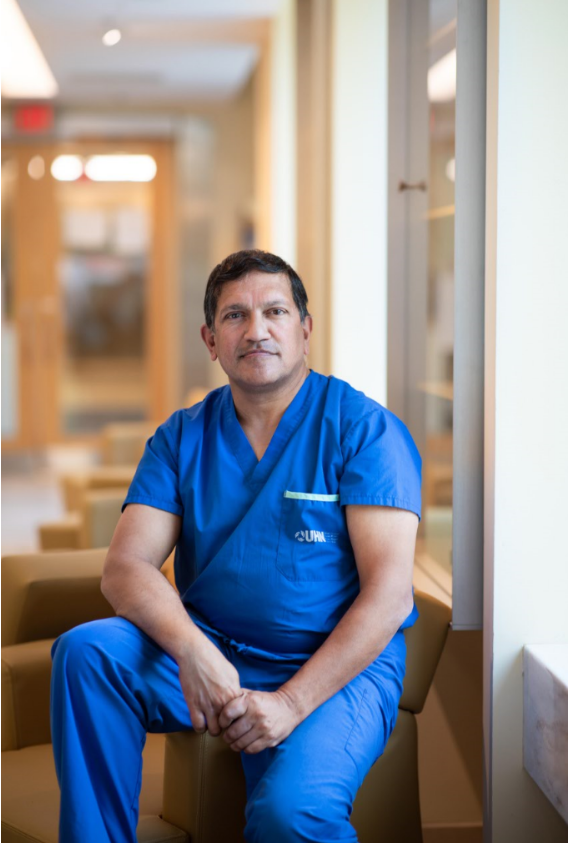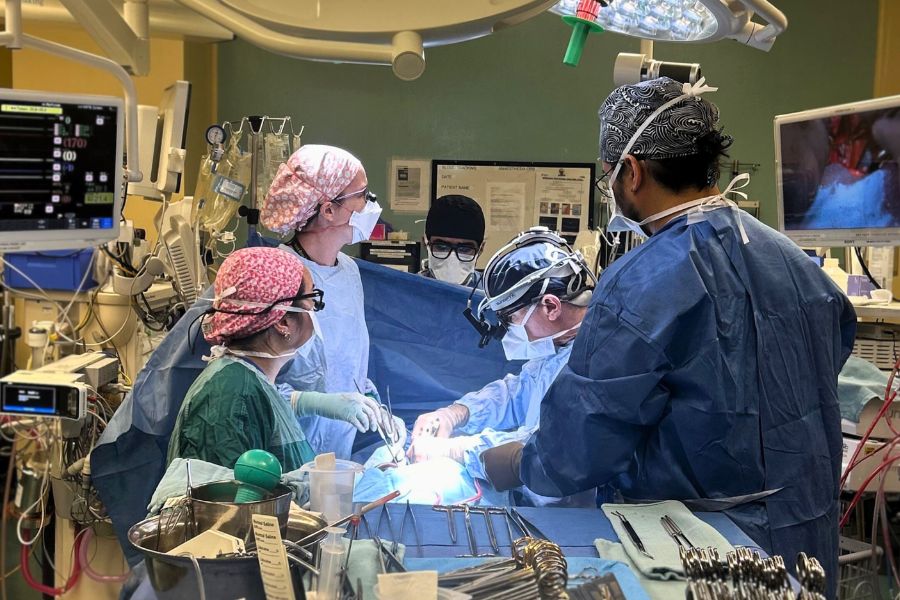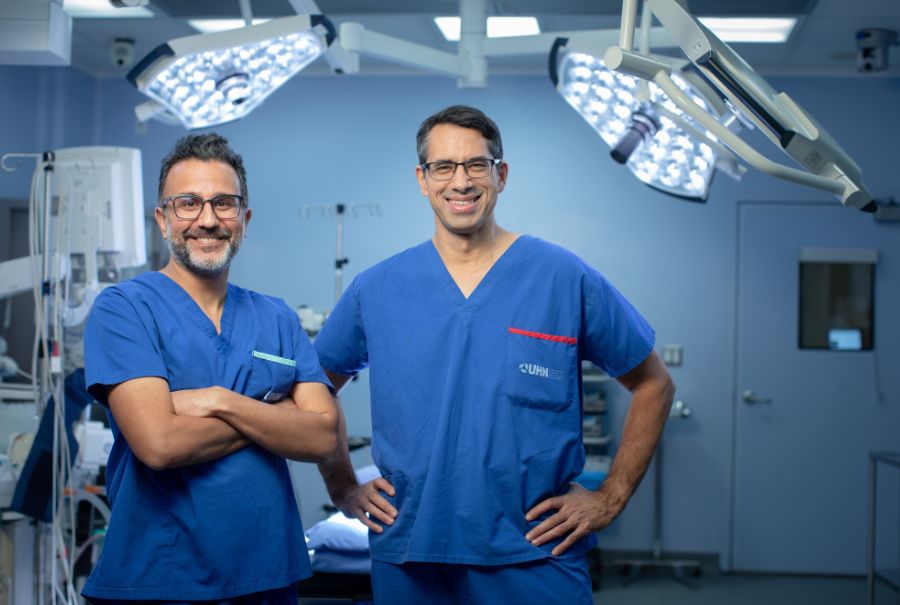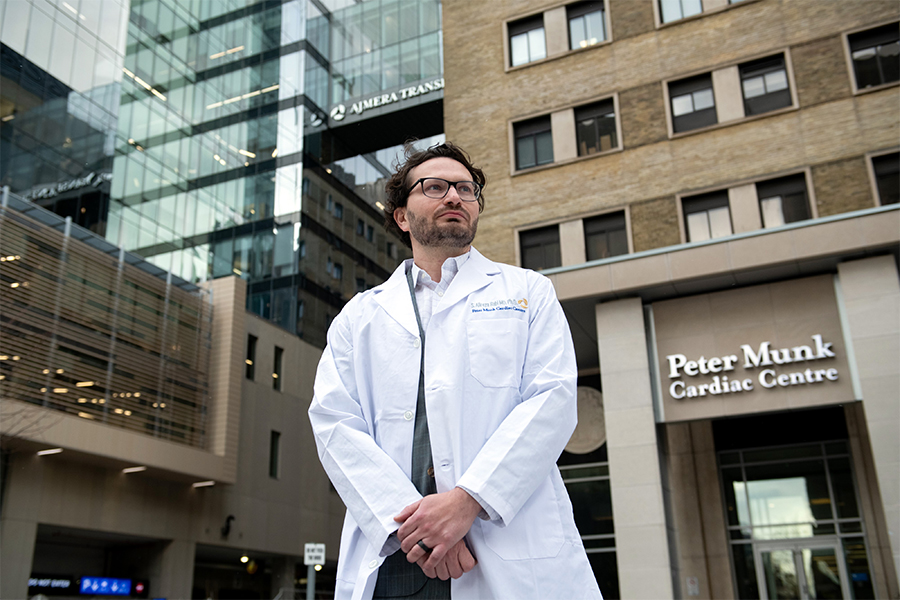How a Toronto mom got a second chance thanks to an experimental procedure to repair a leaky heart valve. (Illustration: Made by Emblem)
By Claire Gagné
Charissa Bell is the first to admit that she used to be hard on her body. Last year, the now-36-year-old mother from Toronto was a skateboarding, motorcycle-riding restaurant and bar worker who drank a lot of alcohol and smoked cigarettes. She was also addicted to opioids, which she was first prescribed to ease the pain resulting from a car crash.
Still, Bell was shocked to learn that a high fever she developed in early 2020 was the result of endocarditis – an extremely serious inflammation of the lining of the heart, brought on by her lifestyle. She was given antibiotics for the infection, which helped, but only for a while. A few months later her legs and abdomen swelled up, while she found herself gasping for air.
It turns out the infection had damaged one of the valves on the right side of her heart, called the tricuspid valve. This valve has three flaps, called leaflets, which typically open and close to allow blood to flow from the right atrium to the right ventricle of the heart, but not back again. Unlike other valves, it can’t simply be replaced by an artificial device – it ideally needs to be fixed using the patient’s own tissue.
“Because of that previous infection, the leaflets of that valve were completely destroyed,” explains Dr. Vivek Rao, Head of the Division of Cardiovascular Surgery in the Sprott Department of Surgery. Instead of closing after each heartbeat, the valve stayed open, allowing blood to flow backward. This put pressure on her liver and kidneys and caused fluid to build up in her body.
“On the ultrasound, the valve looked like a barn door blown open,” Bell recalls. Any lasting solution was going to require some unconventional thinking.
40%
– Source: UHN
Cardiovascular surgeries performed at UHN that are considered complex.
Before the valve could be fixed, Bell had to do her part. She quit smoking and drinking, worked on getting off the opioids and took medication to get the swelling under control. She felt better, although she was still short of breath. In January 2021 she met with Dr. Rao, who is part of the Peter Munk Cardiac Centre at University Health Network (UHN) and holds the Peter Munk Cardiac Centre Chair in Advanced Cardiac Therapeutics, about surgery to fix her leaky valve. The solution he offered would require a leap of faith.
“The tricuspid valve is a difficult one for us to treat,” says Dr. Rao. Because the blood flow across the tricuspid valve is at a lower pressure than the rest of the heart, there’s a higher chance of a clot forming. While other valves in the heart can be replaced with a prosthetic material such as metal, clinicians will often use a pig valve for the tricuspid valve – but those only last somewhere between seven and 10 years. “At which point you’d be at square one, requiring something new,” Dr. Rao explains. Given Bell’s young age, he didn’t think this was the best solution for her.
Thankfully, in 2014, Dr. Rao developed a highly innovative procedure to help people like Bell. At the time, he had been using a U.S.-made product created from the inner lining of the bowels of a pig to replace certain parts and linings of the human heart. The same product, he thought, could also be used to replace the tricuspid valve. “What’s remarkable about this is that it acts as a scaffold,” he says. “So the product itself dissolves between eight and 12 weeks after implant, and it gets replaced by the patient’s own cells and tissue.”

That year, Dr. Rao successfully used the product to replace a patient’s valve, a world first, and then performed a few more similar surgeries, as did other clinicians around the globe. Unfortunately, Dr. Rao had to stop doing those procedures for a while because the product was discontinued. By the time Bell arrived, though, Dr. Rao discovered it had returned to Canada but was being sold under another name for a different purpose – and asked Bell if she was willing to give the surgery a shot.
Fortunately, she was game. In March, she underwent open-heart surgery. Everything went well, although the system that paces her heart was damaged, a common complication of valve surgery. “We always put in a pacemaker lead – the wires that connect a pacemaker to the heart – in these types of operations in the event that the patient requires it, which she ended up needing before she went home,” says Dr. Rao.
Since this technique is new, it’s hard to know how long the restored valve will last, but Bell is well past the most critical point in this process – eight weeks after surgery – when the artificial valve detaches from the heart, leaving her own regrown tissue to do the job. Dr. Rao will continue monitoring her, to collect more evidence that his innovative procedure works. “This is one of the things that we do here at UHN,” he says. “We innovate and continually evaluate our results, striving to do better or learn why a technique doesn’t work and develop alternative solutions.”
Bell can now rest easy and regain her strength. She’s left the bar industry and is working in graphic design, while caring for her 10-year-old son. She’s also looking forward to getting back to motorcycling and skateboarding, though more cautiously. “I’m not going to be pushing my body to the limits,” she says.


